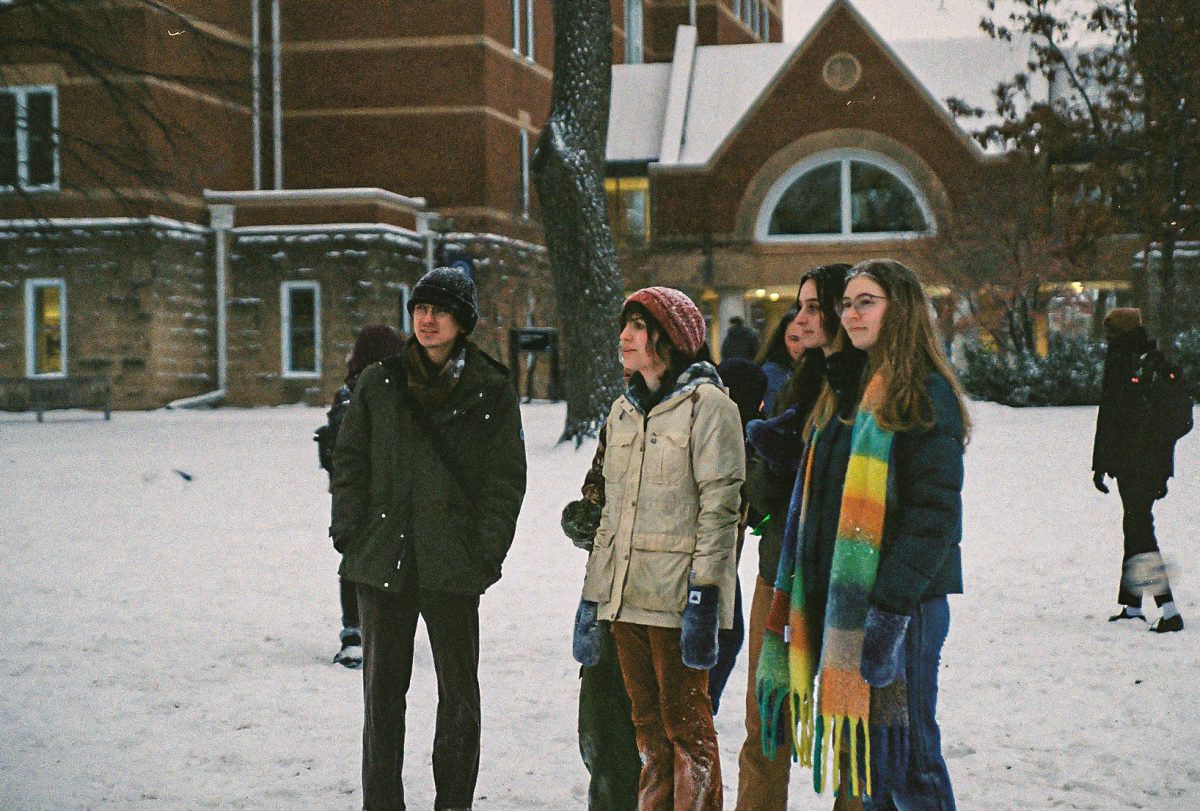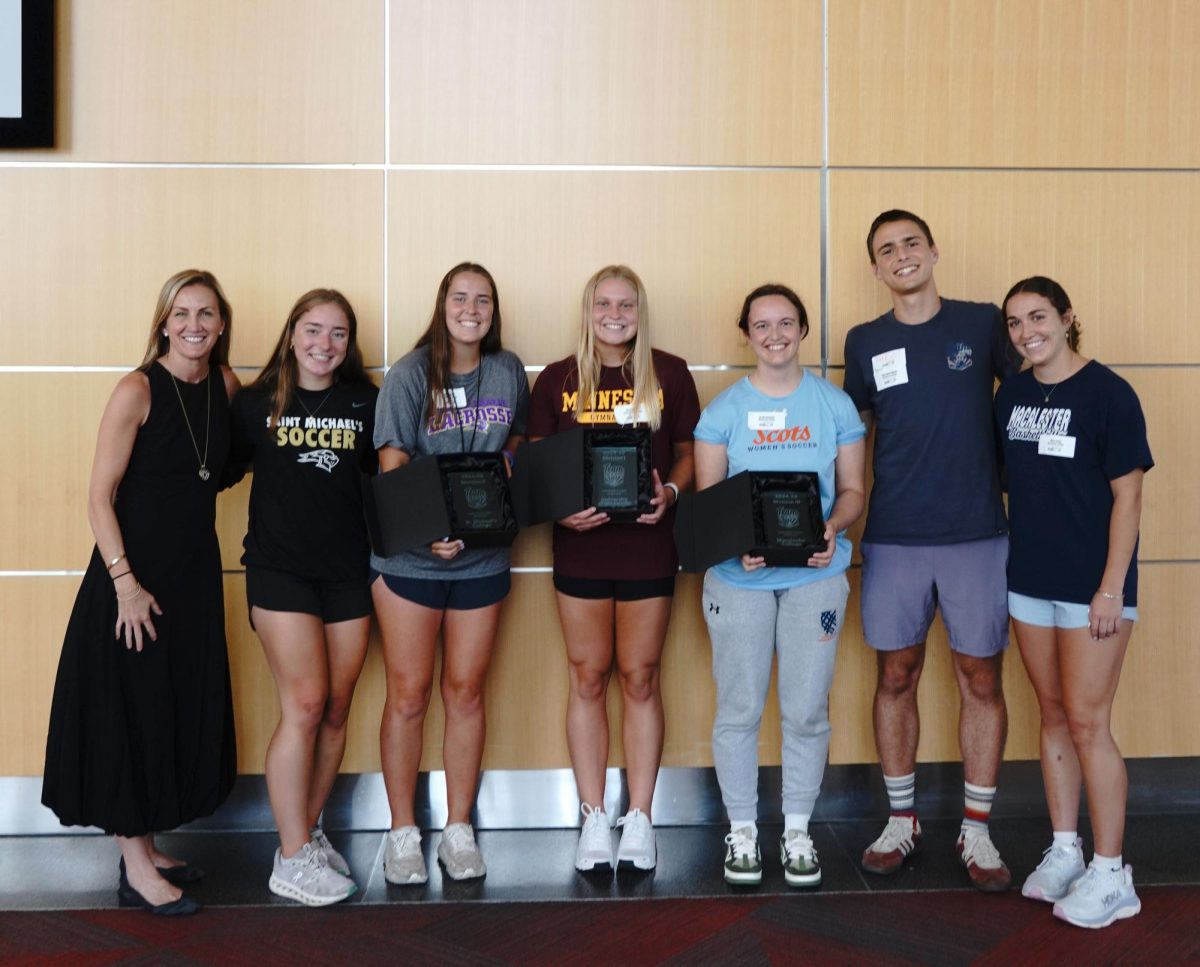After pausing to clarify gender pronouns, Zeam Porter ’20 stated, “They, them, theirs. Or Z, just call me Z.” This emphatic declaration displayed an easy confidence and an air of serious self-assuredness often uncharacteristic of those at the beginning of their college years. Porter is wise beyond their years and emits a warm glow of empathetic and truthful storytelling. Basking in the glow of their poetic wisdom, it was difficult not to feel honored to act as a vehicle to tell their story. Porter has used their personal aesthetic to tell a variety of personal and community consciousness-raising stories over the years. As a black, native, trans and gender nonconforming person, Porter consistently subverts the inherent oppression of their marginalized identities through a creative and community-centered approach to personal style. They understand where they come from and where they want to go. Porter’s words speak for themselves.
Porter details the struggle of their middle school years, and explained, “I was super depressed, and I was going to a private school in Minneapolis and was one of the few black kids, like the only out black kid, and so I felt like identity-wise, I was such an outcast. I dressed as inconspicuously as possible. What was tied to that was kind of like self-hate and sluggishness. Like the more sluggish I felt, the more sluggish I dressed.” The summer after eighth grade, Porter had a self-described revelation while browsing photos of their aunt. They explained, “She was one of those people who could throw anything together and it just worked.”
Thinking about their aunt’s easy and authentic style, Porter began to think of styles that would work for them. Porter explained, “Thinking about how much I hated myself and hated my body, I was like, vests cover my chest, because I identify as trans and gender nonconforming. Vests are the best. So I got obsessed with vests over the summer.” Vests became a way for Porter to convey narratives through style. According to Porter, “I’m wearing this vest so then I can take a piece of clothing that has masculine ties and like either dress it up to be more feminine or wear a certain pattern that goes back to my black roots — my native roots — or to just feel good.” Vests became their signature piece, allowing them to set themself apart from the tempting trap of mindlessly incorporating established aesthetics into one’s style. Porter openly admitted, “For a long time, I thought that I was the bomb, and I then I realized that I was actually just using a template.” They have since shifted their approach, using vests as a vehicle for authentic and recognizable expression. Porter said, “Now I’m thinking more about how if a template [is] a uniform, [then] a signature is how you stay remembered. So vests for me are my signature.”
Revelations of authenticity often come to Porter by exploring their origins and the way they navigate the world as a person of color. They enthusiastically exclaimed, “I love being black so much.” They went on to explain the pride they feel for their community in North Minneapolis, while also meditating on the nature of appropriation. They mused, “I watched ‘Get Out’ recently, and I realized ways in which I am still like sacrificing myself for the white audience or the white gaze.” Porter explained how walking around North Minneapolis, they remember, “it was actually my people who wore a lot of rings first when it was called ‘gaudy and tacky,’ right? It was my people who first had color in their hair, and it was called ‘ratchet and ghetto.’ Appropriation happens a lot, and I think that American culture is black culture. I just always feel like walking through my neighborhood is like the sidewalk is a concrete runway, for real. It really is. You’re going to see how there are almost little alcoves and factions in style, but then they all blend and bleed together.” Pride for their community is an integral part of Porter’s style, as is an intimate understanding of the ways in which black culture is simultaneously denigrated and appropriated by mainstream American society.
While Porter’s roots and influences are important to discuss, they have plenty of original ideas of their own. They practice story telling through clothing choices and outfit creations. Sometimes, they think about the distinct lines present in clothing. They wondered, “If you were to reduce an outfit just to the strongest lines it has, what story does that tell? So sometimes in my head, I’ll reduce my outfit just to the lines.” They are also interested in the history of clothing at thrift stores and the energy the pieces hold. They explained how one can pick up a piece, and “whoever wore this was angry a lot, or like whoever wore this felt like they weren’t being heard. I’m going to take that energy, and I’m going to hold that now too.”
Sometimes the ways in which they pair articles of clothing tells an intentional story. After realizing that much of their anxiety stemmed from being unable to control the rumor mill or to control their reputation, they chose to make intentional statements. As a “minority with a lot of intersections in a place,” Porter understands that people will notice and talk about you. When they attended private school and were called ‘uppity,’ they paired tying an ascot tie around their neck with sporting a bandana on their head as a commentary on classism. They also gave an example of using red boots, a gift from their mother, to leave a certain impression in specific spaces. They explained, “I know that everyone’s going to comment on those red boots, right. So because of that, I’ll now go into a space and I’ll feel empowered to get my school work done because the teacher and the students in the class will remember me for my red boots, so I’ll feel more confident.”
Porter also uses clothing combinations to channel certain personas, for both aesthetic and protective purposes. Last summer, they spontaneously decided that they wanted to open a pawn shop one day. Eventually realizing that owning a pawn shop would be inherently hypocritical for someone who identifies as anti-capitalist, they decided to compromise by dressing like “my uncle owns the pawn shop. So I would have like several chains on, like a lot of rings, overalls, and like wear a bandana around my neck all the time.” This is just one persona that Porter tried on for size, as a creative and stylistic endeavour.
This propensity for personas is a fun experiment, but it’s also a method for feeling safe in unwelcoming spaces. Porter expanded by saying, “If I’m going into spaces in which I don’t feel like I’m safe, I’ll say that I’m dressing in drag, but people don’t know what that means. I’ll be super femme.” If they go somewhere where many people are Cis, like their church, they channel their hypothetical twin. Porter said, “If I had a twin sister, my parents would have named my twin sister Bianca, so sometimes I think, what would Bianca wear? Bianca would have been this perfect femme, soft-spoken, Creole (because my dad’s Creole) woman, who’s super femme and pristine.” When dressing “femme,” Porter sports full contour makeup, a push-up bra and super short shorts. They attempt to “use femininity to my advantage, in a way that is self-protecting.” They have a “femme body,” and they explained that they “no longer have internalized transphobia to hate that body, but I definitely know that a femme body who holds masculinity is a target. So when I don’t want to be a target, I’ll put all of my masculinity in my mouth, while I present really femme.” They’re speaking about how they display a femme exterior through style to protect themself, while they don’t identify with the female gender.
While Porter is already a storyteller through style, they have plans for future exploration. In high school, they sported a cotton candy pink Afro and long white t-shirts as commentary on the War on Drugs. This look prompted them to want to present themself as a type of cartoon character, which also stems from their affinity for Afrofuturism, a cultural aesthetic that uses science fiction, historical fiction, fantasy, Afrocentrism and magic realism to critique the present-day dilemmas of black people. However, they found that “when you live your life as a cartoon character, people will consume you in a certain way, and life will get hectic.” They are currently in the process of finding “a way to express how weird and eccentric I am and how nonlinear I am, without feeling exhausted all the time…I hope that I can gain the confidence, and the energy to be a 3D claymation.” Porter wants to be seen as the complex, creative, unique and vibrant person they are without being reduced to stereotypes and generalizations, making emulating a claymation character, instead of a 2D animated character, a relevant pursuit.






Gavin Allan • Sep 8, 2019 at 9:12 am
Thanks for the article, how can I make is so that I get an update sent in an email every time you publish a new article?
Lydia Cerda • Jul 23, 2019 at 2:53 pm
Mass parsite http://bit.ly/2W9CVkn